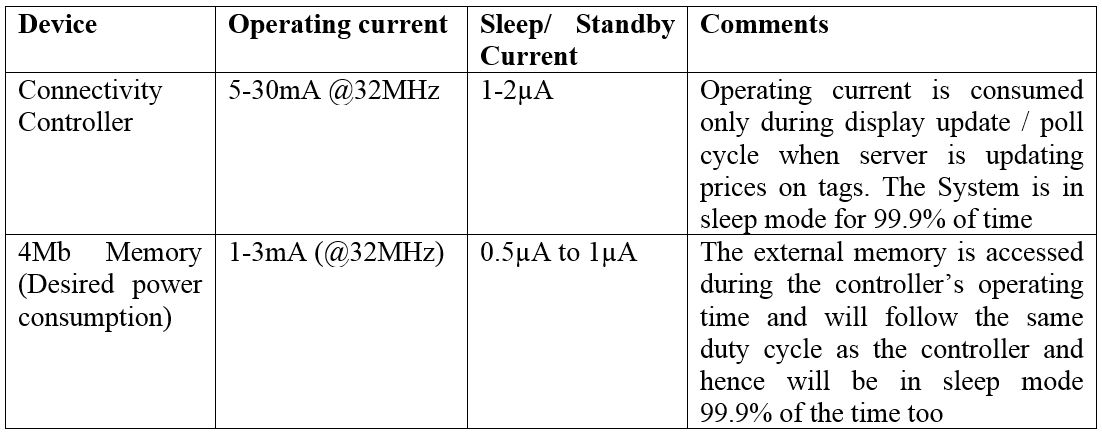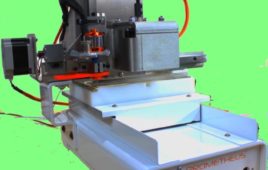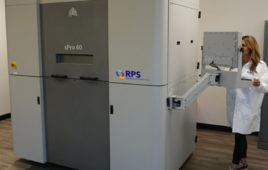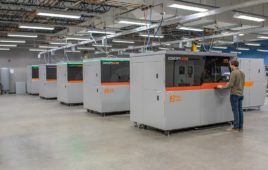Part 1 of this series explored how intelligent point of sale (PoS)terminals are helping change the way retailers do business and the role semiconductor memories play in this so-called intelligent shopping revolution (Click here to read part 1). This next installment looks at Electronic Shelf labels (ESL) and a few other devices that are redefining the shopper’s experience.
Today the Internet of Things (IoT) is impacting almost all industries, with the potential to become a $1.7 trillion market by 2020. The IoT space is built on cloud computing, networks of data-gathering sensors, and devices having mobile, virtual, and instantaneous connections. Industry experts predict IoT is going to make everything in our lives “smart”, from streetlights to seaports. IoT is already a reality in a wide variety of industries, from factory automation to on-demand entertainment and wearable devices.
The Internet of Things is undoubtedly the next growth driver for the semiconductor industry and embedded systems. The emergence of IoT is driving the need for many new enabling technologies including:
- New generation of ultra-low-power integrated circuits (ICs)
- New wireless communication protocols
- New data processing technologies for analytics and cloud computing
As chips scale to smaller process nodes, one class of ICs that has traditionally been relatively unimportant and is now becoming critical is memory. The Internet of Things, with its exabytes of data flowing through the Internet, is driving the need for high performance memories that can operate with low-power and fit in extremely small packages.
Another constraint that IoT has placed on semiconductors, and memories in particular, is the need for security and reliability. Vast amounts of personal information will be stored in wearables, servers, and other IoT nodes. IoT has created a demand for high-performance devices with low power consumption, to perform complex operations while running on battery power, while also minimizing pin-count and form factor.
Microcontrollers have already adapted to this new set of requirements. They incorporate special low-power modes like Deep Power-Down and Deep-Sleep while providing iteratively better performance (clock frequency and feature set) with every generation. To keep up, memory designers will have to adapt too so designers need not worry about a trade-off between performance and power.
This article focuses on semiconductor memory trends in retail shopping. Large stores have begun to use the Internet of Things to engage with their customer base and enable a shopping experience tailored to each individual shopper. Retailers are integrating devices with one another throughout the store, as well as with corporate headquarters and cloud resources. The ultimate goal is to deploy technology that leverages collected data to drive sales, build customer loyalty, manage inventory, and enhance operational efficiency.
In part 1, we explored one of the earliest adopters of IoT in retail – POS terminals. These smart POS terminals are often the first step retailers take to help them track customer shopping habits, manage inventory, and drive loyalty through promotions. All the major POS terminal suppliers have introduced models that implement these capabilities. They tend to be powerful, compact, battery powered, and highly secure. These requirements trickle down to all the semiconductor chips used in these devices. You can read the article here [link to part 1].
In this article we’ll cover a few other key devices that are likely to be introduced in stores in the near future. These devices will allow consumers to have a more engaging shopping experience while enabling retailers with inventory management while improving customer service.
Electronic Shelf labels (ESL)
A common task among retail employees is walking up and down the aisles to put current price and information labels on the shelves. For large retailers with frequent promotions, this involves updating pricing on an almost daily basis. However, this activity is now being transitioned online with the help of technology. The Electronic Shelf Label is a fast emerging and popular technology that can eliminate the paper labels that are often changed weekly in grocery stores, freeing up labor and reducing paper waste. ESL technology would also eliminate discrepancies between shelf and cash register prices and allow the flexibility to make immediate price changes. A longer term capability of an ESL is to allow stores to provide customized pricing based on promotions or a customer’s shopping history. For example, if a customer buys a dozen of eggs every week, a retailer could incentivize the customer to continue doing so by offering a subscription plan.
In its simplest form, an ESL consists of an LCD or an E-ink display, RF module, a processor companion, coin cell battery, and low pin count storage memory (both volatile and nonvolatile storage). Based on the features required, stores can save price trends, purchase trends, and current stock information on the ESL, then refresh the data on a centralized server at the end of the day. Use of a low power controller and memory allows the whole system to be powered by a small coin cell battery and still have a lifetime of several years. Based on the connectivity options included (typically either BLE or Wi-Fi), the onboard memory doubles up as protocol stack storage space and offers direct connectivity to a user’s cell phone, often bypassing the central servers at the store.
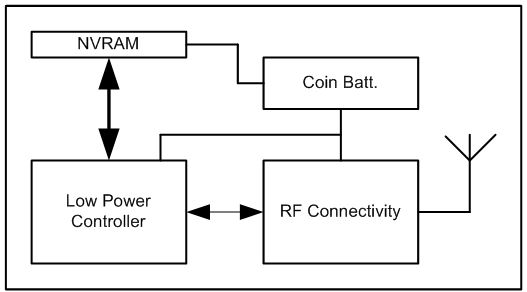
Functional block diagram of an ESL tag. Graphic courtesy of Cypress Semiconductor.
Due to the cost and battery life requirements of Electronic Shelf Labels, most will use low-end wireless controllers like the WIFI+Zigbee SoC from Texas Instruments (CC253X series). These controllers double as the processing and connectivity unit, and include an e-ink display, Flash, and onboard RAM for creating and forwarding protocol packets. The Flash is usually used to store boot code, which rarely exceeds a few megabytes. Hence these devices very rarely require external Flash memories, unless they have a wide array of features and touch functionality. However, widely used Electronic Shelf Labels often require an external RAM, since the onboard RAM of 8KB to 32KB is shared between temporary storage for code execution space and data storage for forming a protocol packet to be used in next upload to the server. The onboard RAM limits the size of packet that gets constructed in the device. A major portion of total system energy is spent on establishing the wireless connection with the base station. Once a connection is established, to optimize power consumption the system should be able to upload as large a packet as allowed by the protocol stack and, ideally, should not be limited by the memory available in the system.
An external RAM is a far simpler and less expensive approach compared to using a controller with a larger onboard RAM. Since most controllers have limited pins, it helps if the memory can interact via the SPI interface. Moreover, they need to support low power consumption in order to not drastically impact the overall system power budget. The following table contrasts the power consumption of a connectivity controller with an external memory.
This article and the earlier edition have covered only a limited subset of the components that make a shopping experience intelligent. We will be writing one more article on a key component of an intelligent shopping experience. However, besides this there are various other components like video cameras, sensors, beacons, displays and extensive data analytics. More about SRAMs with deep-sleep mode can be found in this application note. Further information about designing systems using HyperFlash memory can be found in this application note.
Filed Under: Rapid prototyping

